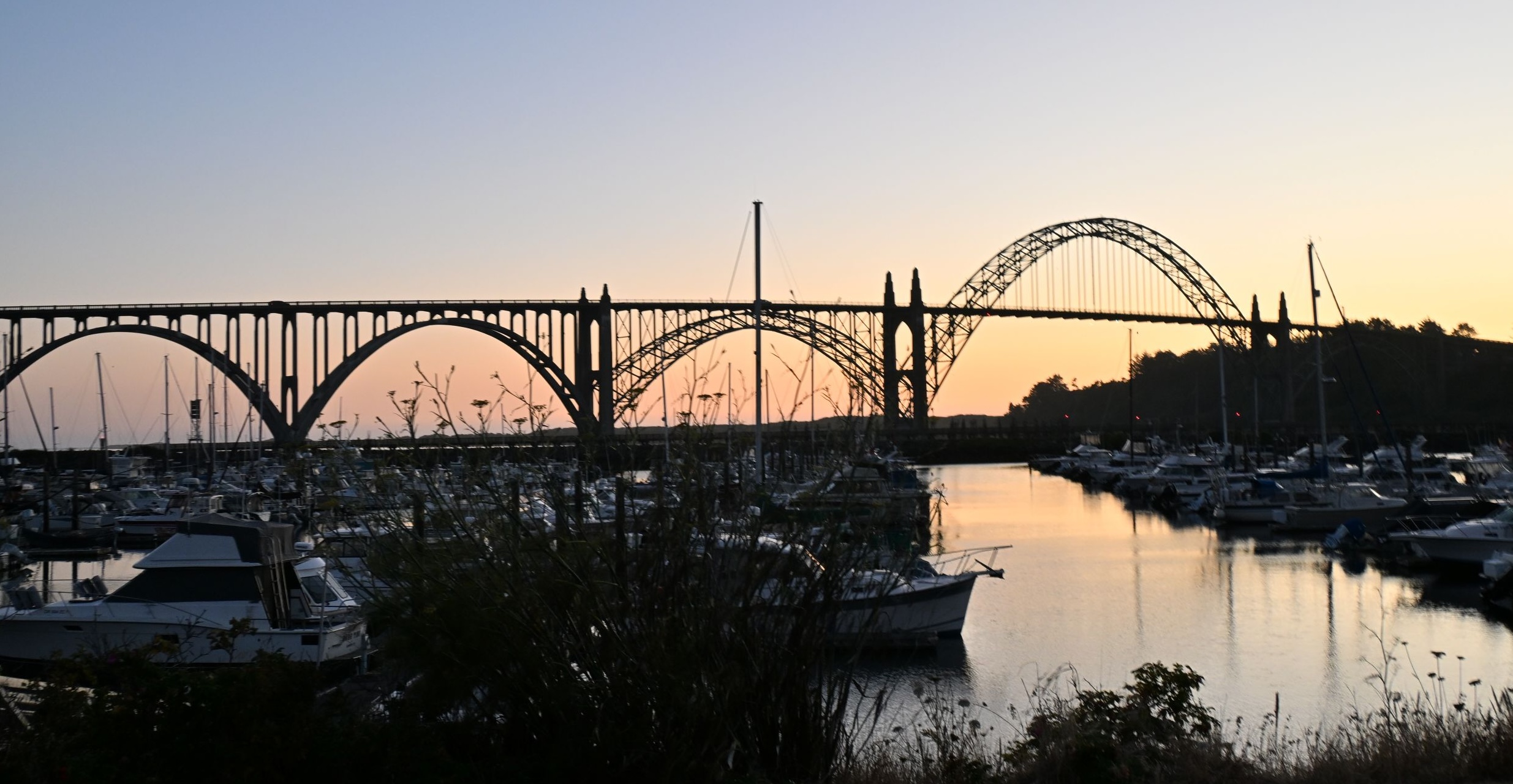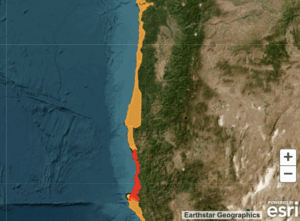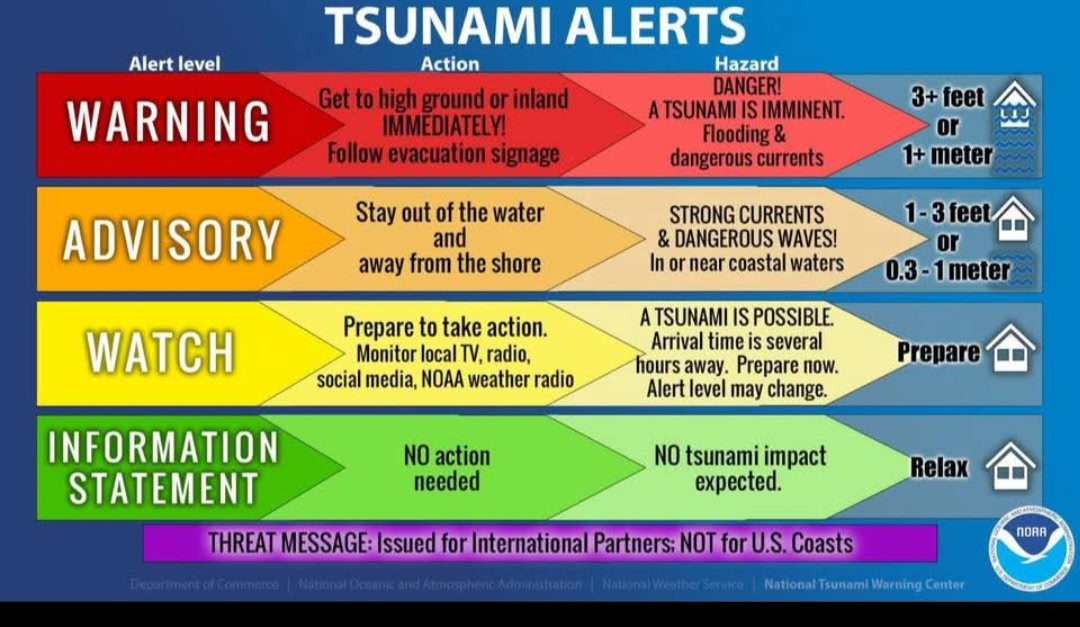
Wednesday, July 30 updates:
From the Lincoln County Sheriff’s Office at 10:25 a.m.:
- The tsunami advisory is canceled for the coastal areas of Oregon and Washington
- No tsunami danger presently exists for this area.
- Refer to tsunami.gov for more information.
- Check to see if your Lincoln Alerts profile is up-to-date. Complete a profile Wellness Check (English, Spanish).
- Review NVS Tsunami Evacuation Zones
- Learn what tsunami evacuation zones your home, work, school, and other areas you frequent are in.
- Learn the Tsunami Message definitions and appropriate actions.
- Bookmark these webpages:
- Lincoln County Emergency Management Facebook Page
- Lincoln Alerts Member Portal: Lincoln County Lincoln Alerts – Notifications
- Save the Lincoln County Call Center information – this will stay the same for all emergencies.
- 541-265-0621
- lincolncocallcenter@co.
lincoln.or.us
From the National Weather Service
Wave measurements were as high as 5.7 feet in parts of the Hawaiian Islands, less than a foot on the Oregon coast but 3.7 feet near Crescent City on the California-Oregon border.
A tsunami advisory – the second highest of emergency alerts – remains in effect for all of the Oregon coast, although no issues have been reported along beaches or marinas because the waves that hit overnight were less than one foot and occurred after a low tide.
Tsunami advisories mean that a tsunami capable of producing strong currents or waves dangerous to persons in or very near the water is expected or is already occurring. Areas in the advisory should not expect widespread inundation. Tsunamis are a series of waves dangerous many hours after initial arrival time. The first wave may not be the largest.
From the Associated Press
- Some advisories and warnings are still in effect: Much of the coastline for Chile is under the highest level of alert. The worst appeared to have passed for many areas, including the U.S., Japan and Russia. Authorities in Hawaii downgraded the state to a tsunami advisory early Wednesday, and evacuation orders on the Big Island and Oahu, the most populated island, were lifted.
- Even under an advisory, the risk remains: An advisory means there is the potential for strong currents and dangerous waves, as well as flooding on beaches or in harbors. A tsunami height of 10 to 13 feet was recorded in Kamchatka, and waves of 2 feet were recorded on Japan’s northern island of Hokkaido. In Northern California, officials recorded waves of 3.6 feet (1.1 meters) in Crescent City.
- Earthquake was one of history’s strongest: The quake struck at 8:25 a.m. Japan time with a magnitude of 8.8 and a depth of about 21 kilometers (13 miles), according to the U.S. Geological Survey. It was centered about 120 kilometers (75 miles) from the Russian city of Petropavlovsk-Kamchatsky. Multiple aftershocks as strong as 6.9 magnitude followed.
By LINCOLN CHRONICLE Staff
A strong earthquake in eastern Russia triggered tsunami alerts 4,000 miles away on the Oregon coast Tuesday night, sending waves of concern among many residents but little fear of anything significant from a small surge expected to arrive between 11:40 p.m. and midnight.
Alerts from federal and local emergency management agencies began Tuesday evening following one of the world’s strongest earthquakes that struck off the east coast of Kamchatka, Russia. The 8.8-magnitude earthquake set off a tsunami in the northern Pacific region and prompted warnings for Alaska, Hawaii and other coasts south toward New Zealand.

The Pacific Tsunami Warning Center said a tsunami had been generated by the quake that could cause damage along the coastlines of all the Hawaiian islands. Much of the West Coast spanning Canada’s British Columbia province, Washington state, Oregon and California were also under a tsunami advisory.
An “advisory” is the second-highest tsunami alert level, and carries the suggestion that people stay out of the water, away from beaches and to expect strong currents and potentially dangerous waves.
Federal, state and local emergency officials said small tsunami waves would reach the Oregon coast after 11:30 p.m. Tuesday, and warned people to avoid beaches and shorelines but said it was not a major event.
But the first waves to land on the Oregon coast – predicted to be 1 to 2 feet – will come just after a low tide of 2 feet, which is at 10:40 p.m. Tuesday and much less than the high tide of 9.7 feet earlier in the day. Tsunamis can arrive as a series of ocean surges for many hours, officials warned, and the first wave may not be the largest.
Cinamon Moffett, emergency manager for the Hatfield Marine Science Center on Yaquina Bay in Newport, said small tsunami waves arriving during low tide would reduce the area inundated by water but that there would still be currents and water in unexpected areas that could surprise people.
But still, Moffett said, “We’re looking at relatively low impact.”
While alerts sent to cell phones and social media from emergency management agencies worried a lot of people, it was calm in the Port of Newport’s RV park and marina in South Beach. There, as the sun set Tuesday night, Kai Miller moved most of his important personal items off his sailboat and attached an emergency blanket to his backpack while working from the bed of his truck.
Since receiving the first tsunami alert, Miller put plans in place just in case would need to evacuate. He has all the emergency supplies he thinks he might need from food to survival gear.
“It could be nothing, but I’d rather be prepared,” Miller said.
But the large marina was mostly quiet. Miller and one other sailor were the only ones prepping for the worst-case scenario.
“Most of these old sea dogs, they aren’t worried,” Miller said, “I’d just rather be ready if, God forbid, it happened here.”

Here’s when waves might reach destinations along the West Coast, according to NOAA’s tsunami center estimates:
- 11:45 p.m. Tuesday: Long Beach, Wash.
- 11:50 p.m. Tuesday: Brookings
- 11:55 p.m. Tuesday: Seaside and Newport and Crescent City, Calif.
- 12:40 a.m. Wednesday: San Francisco
- 1:05 a.m. Wednesday: Los Angeles Harbor
- 2 a.m. Wednesday: Tacoma
A full list of when large waves might arrive on the West Coast is online here.
This is the third warning of potentially small tsunami-caused waves on the Oregon coast in the last three years.
Last December, a 7 magnitude earthquake 45 miles southwest of Eureka, Calif. triggered a short notice of tsunamis along the southern Oregon and northern California coasts.
In January 2022, there was a small tsunami surge on the Oregon coast caused by a massive eruption of an undersea volcano near the Pacific nation of Tonga that sent larger-then-normal swells up the Oregon, Washington and California coasts.




















